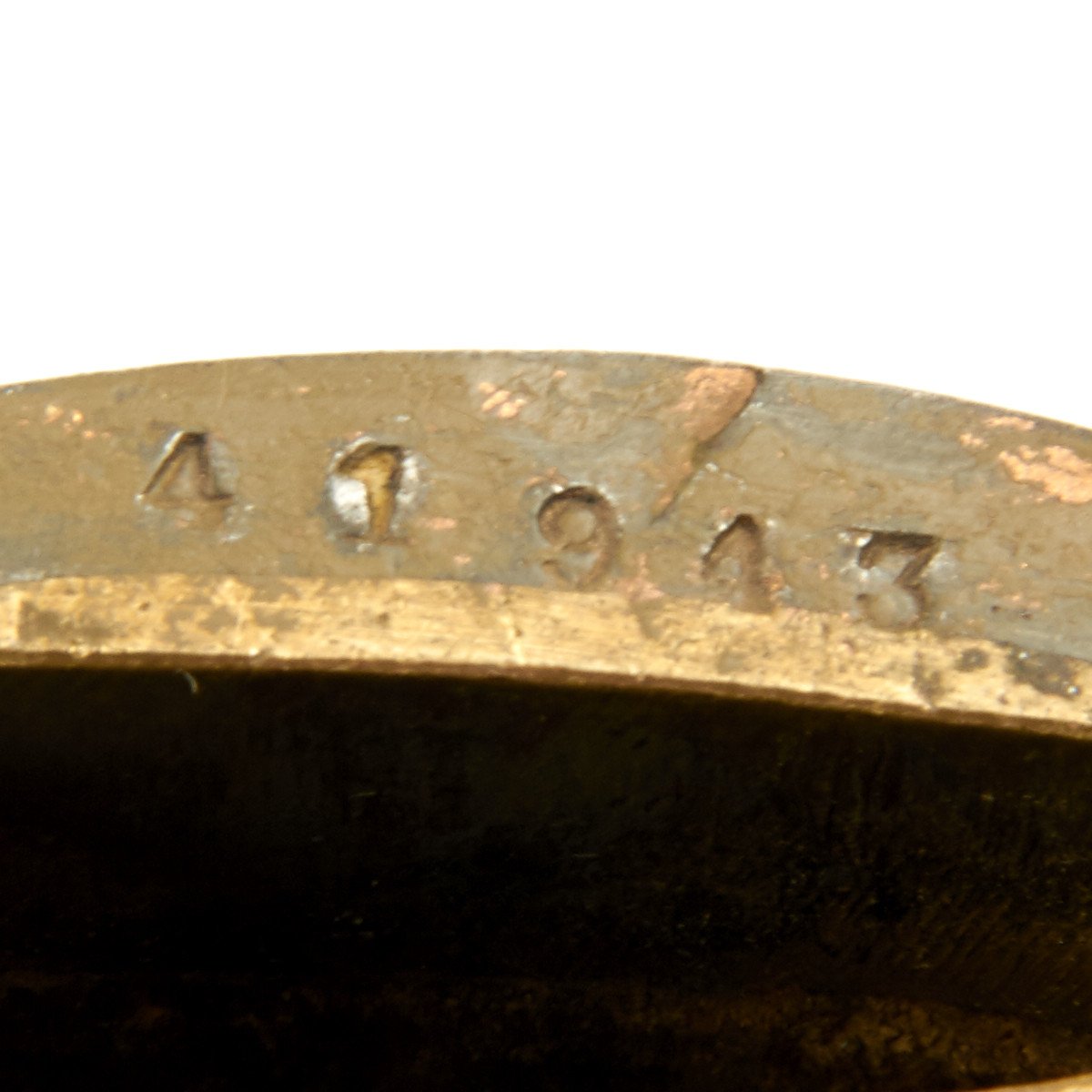
- #WWII JAPANESE SWORD SERIAL NUMBERS HOW TO#
- #WWII JAPANESE SWORD SERIAL NUMBERS SERIAL NUMBER#
- #WWII JAPANESE SWORD SERIAL NUMBERS SERIAL#
Stamped on Samurai swords with machine made blades. The paint used for these markings is usually green, red or white.
#WWII JAPANESE SWORD SERIAL NUMBERS SERIAL#
More than likely this is a serial number. The symbol of the Japanese Imperial Army. Often times the name of the master will be found on the opposite side of where this inscription is found. This type of markings usually indicate the date in which the sword was manufactured.
#WWII JAPANESE SWORD SERIAL NUMBERS HOW TO#
For additional information on how to read the markings of Samurai Sword. The following table provides some examples of how the swords can be marked. These blades can be hand-made, just like the Samurai sword, therefore it can have the same type of markings. Other swords that can have markings in the tang include the ofifcer parade swords. There are exceptions to this rule, specially with machine made blades. Most of the markings are found in the tang area. This information is brought to you courtesy of MilitaryItems. Sometimes in the shape of symbols, other times by using letters from the alphabet or kanji symbols. The markings are inscribed in different ways. Information Regarding Japanese Katana Sword. I need to refer to the Japanese sword index before I can give more definite answers but I believe it to most definitely be a sword of Japanese manufacture.Katana Sword Indonesia.

The flag is intriguing and may indicate this was made for an occupied Taiwan garrison. The European style handguard was popular during the Meiji period, understandable as it was a time of massive modernization as well as widespread exposure to Western culture and especially Western militarism's.Īlso the scabbard's weathering is interesting but I cannot draw many conclusions without closer examination.ĮDIT: With your follow up photos I can indeed confirm that it says Showa. If this sword was made in the Showa period, European style handguards should have been phased out by then and replaced with a more traditional Japanese furnishings. Interesting is the European style handguard. I conclude this to be one of the mass produced blades made for the new style army and navy NCOs of the Imperial Japanese forces.
#WWII JAPANESE SWORD SERIAL NUMBERS SERIAL NUMBER#
The number seems to be a serial number and the words on the front say 天星 which literally translates to 'starry heaven' or 'star of heaven'. The right side appears to be the name of the smith/manufacturer which, if I assume correctly, to be 佐藤小太郎 or 'Satou Kotarou', his first name being Kotarou. On the left side which translates to "15th year during the reign of Showa" which is 1940 if my Japanese calender math is correct. In the 4th image, unless my eyes completely deceive me, it says I could not find any with numbers or characters on the blade though.Īny suggestions on how to clean the blade or if i even should? I know cleaning is very important and must be done the right way so the blade is not damaged.ĮDIT Here are some better pictures of the flag and characters on the blade: I did a little research on my own and think they are some sort of Japanese WW2 infantry swords. I am just trying to find out a little more info on them and maybe what the writing on them says. They are in pretty rough shape, but i can still make out some Japanese characters ( i think they are Japanese characters) and numbers on the blade. I am moving this coming week and came across these stuffed in a gun bag. Previous AMAs | Previous Roundtables Featuresįeature posts are posted weekly. Please Subscribe to our Google Calendar for Upcoming AMAs and Events To nominate someone else as a Quality Contributor, message the mods.

Our flaired users have detailed knowledge of their historical specialty and a proven record of excellent contributions to /r/AskHistorians. Please Read and Understand the Rules Before Contributing. Report Comments That Break Reddiquette or the Subreddit Rules. Serious On-Topic Comments Only: No Jokes, Anecdotes, Clutter, or other Digressions. Provide Primary and Secondary Sources If Asked. Write Original, In-Depth and Comprehensive Answers, Using Good Historical Practices. Questions should be clear and specific in what they ask, and should be able to get detailed answers from historians whose expertise is likely to be in particular times and places. Nothing Less Than 20 Years Old, and Don't Soapbox. Be Nice: No Racism, Bigotry, or Offensive Behavior. Downvote and Report comments that are unhelpful or grossly off-topic.Upvote informative, well sourced answers.New to /r/AskHistorians? Please read our subreddit rules and FAQ before posting! Apply for Flair


 0 kommentar(er)
0 kommentar(er)
